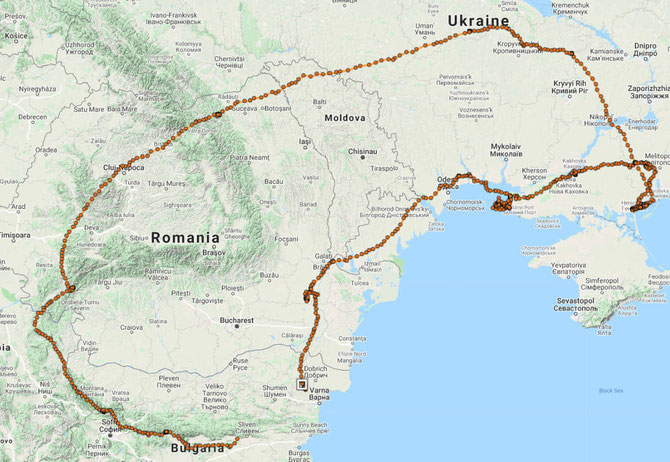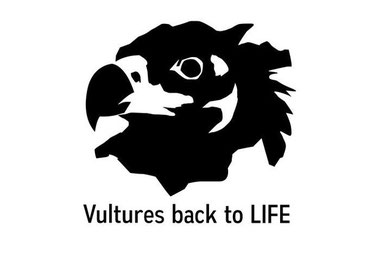
Sliven, a reintroduced Cinereous Vulture in Bulgaria, has greatly surprised the Vultures Back To LIFE team with his latest movements. First, he flew north and ended up in Ukraine and then he safely returned to Bulgaria. But then, he did it again, he travelled to Ukraine, and he is now heading south once more.
Sliven
The Vultures Back To LIFE team aims to reintroduce the Cinereous Vulture back to Bulgaria by tackling threats and releasing captive-born and Spanish wild-born birds to the country. The Cinereous Vulture Sliven is a young Spanish wild-hatched bird that was rehabilitated in Spain before the VCF transferred him to Bulgaria. Then, in 2019, the Vultures Back To LIFE team released him in Kotel.
First trip: From Bulgaria to Ukraine and back

On 9 April 2020, he began heading north from Bulgaria towards Romania when he unexpectedly made an eastwards turn and ended up in Ukraine. The nearest Cinereous Vulture colony there is in the Peninsula of Crimea counting about 18 breeding pairs. The team was closely tracking the movements of Sliven and were in contact with colleagues in Ukraine to help ensure that he survives this long and exhausting trip. Sliven spent a total of 2 weeks in Ukraine and crossed Moldova on the way there, but stayed south along the coast on the way back to Bulgaria which he reached on 24 April. During this excursion, he covered 4177km in a bit more than two weeks.
Second trip: From Bulgaria to Ukraine and heading south again

But, Sliven kept on moving, instead of returning to the release site where other Cinereous Vultures and Griffon Vultures are present. On 27 April, he started heading north again, back to Ukraine, almost as far north as Belarus. Some possible explanations for these movements include that there were southern winds, so maybe he was flying north of those and perhaps not alone but with some Griffon Vultures or other raptors. Furthermore, in spring, flocks of non-breeding Griffon Vultures fly north and reach Estonia, and, commonly, other birds follow them. The Vultures Back To LIFE team is quite worried because the bird was travelling non-stop and we are not sure when he ate last. We are constantly monitoring his movements in case the bird needs assistance. We hope he manages to reach his release area in Kotel Mountain safely, where there is plenty of safe food resources and other species of his kind. So far, the Cinereous Vulture travelled over 6405 km in the last 30 days (08.04.2020 – 08.05.2020)
Cinereous Vultures in Bulgaria

The Cinereous Vulture was found everywhere in Bulgaria during the 19th and the beginning of the 20th century. But due to habitat loss, the widespread use of poisons to combat terrestrial predators, agricultural intensification, lack of food resources, and deliberate shooting of individuals, the species was driven to extinction. The last proven breeding pair nest was recorded in 1993 in the Cold Well area, during an expedition by Green Balkans experts. The only natural colony of the Balkans species is located in the Dadia National Park, Greece, where often single birds were observed visiting vulture feeding sites in the Eastern Rhodopes, reaching both the Balkan Mountains and the Kresna Gorge. In 2015, the Vultures Back To LIFE project was launched to bring the species back to the country.
Sign up to our newsletter to stay up to date with Europe’s vultures!
Vultures Back To LIFE

Led by the wildlife conservation charity Green Balkans, with activities also implemented by the Fund for Wild Flora and Fauna, and bringing together partners from Bulgaria, Spain and Germany, Vultures Back to LIFE aims to reintroduce the cinereous or Eurasian black vulture to Bulgaria. The team will transfer and release around 60 birds, some from captive-breeding, but mostly coming from wildlife rehabilitation centers in Extremadura (Spain) into the wild in Bulgaria as well as creating supplementary feeding stations and improving populations of wild herbivores, improving the nesting conditions and creating artificial nest sites and tackling some of the major threats to vultures in the country such as insulating electricity pylons and illegal use of poison in the nature.




